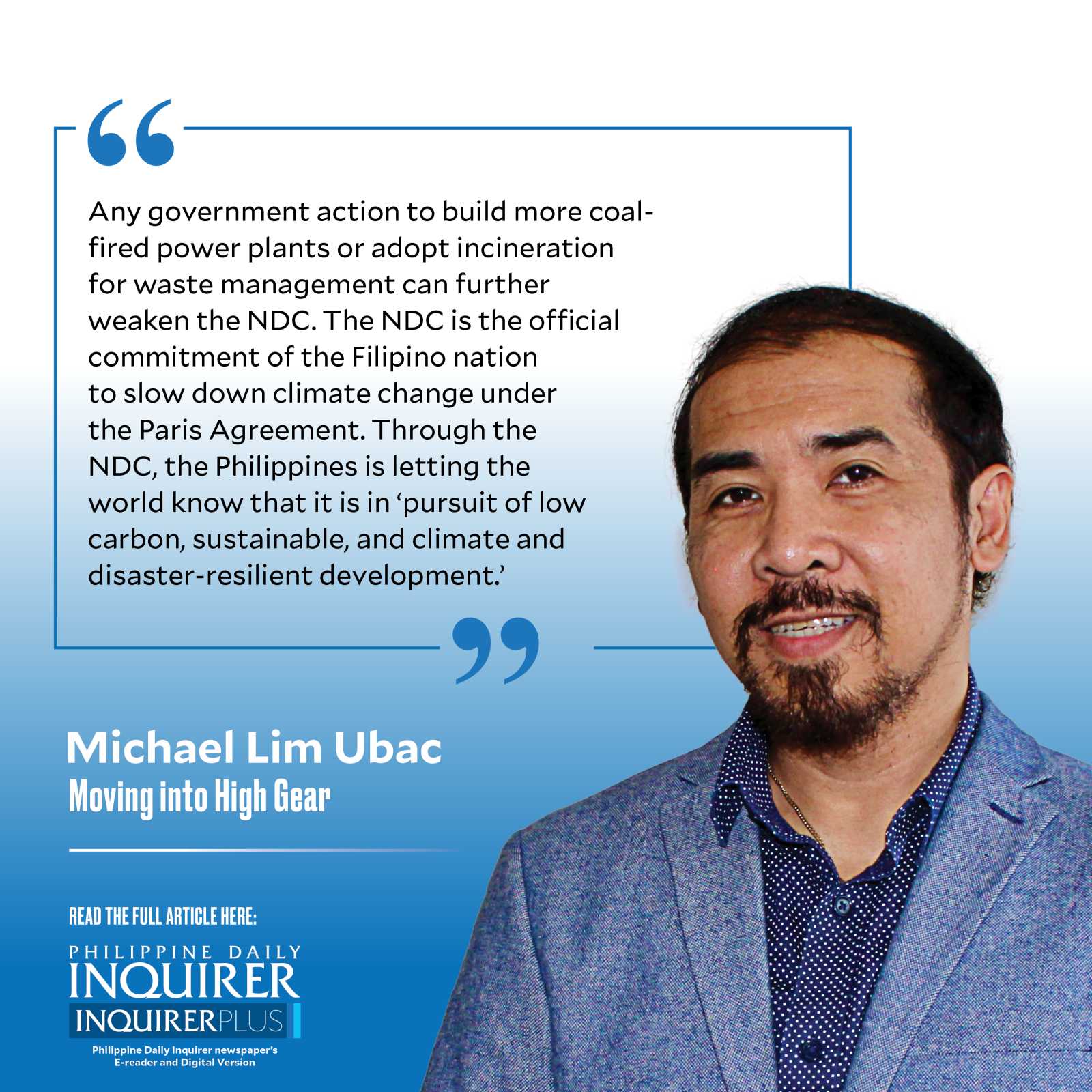The politics of moving toward a green economy
The time is ripe for the Philippines to accelerate its transition into a green economy by ramping up its solar and wind energy development. But our addiction to oil, coal, and gas is hindering this huge potential to assist the planet in combating climate change.
The international community has recognized the Philippines as a “high-performing country” in climate action. The recognition came without much fanfare last December when the country ranked sixth (up from 12th) in the climate performance ranking of the Climate Change Performance Index (CCPI) for 2024 (https://ccpi.org/country/phl/). Denmark and Estonia were the only ones ahead of the Philippines. Since no country performed “well enough in all index categories to achieve an overall very high rating,” CCPI said, “the first three overall positions therefore remain empty.”
Article continues after this advertisementThe index cited four reasons for the Philippines’ improved ranking—a high score in reducing greenhouse gases (GHG) emissions and energy use, a medium score in renewable energy development, but a low score in climate policy.
What these scores imply is that the country is now among the top 3 frontrunners in the global climate index, which measures over 90 percent of GHG emissions coming from 63 countries and the European Union. The CCPI enables transparency in national and international climate politics by using a standardized framework to compare the performance of countries in four categories: GHG emissions, renewable energy, energy use, and climate policy.
Remember that the Paris Agreement, to which the Philippines is a signatory, has set an ambitious goal to limit global warming to 1.5 degrees Celsius above pre-industrial levels.Considered a net emitter of GHGs, the Philippines produced only 0.5 percent of global emissions in 2020 and contributed 0.41 percent of global emissions from 1990 to 2020. China, the United States, India, Russia, and Japan were the top emitters in 2020, with the Philippines placing 34th.
Article continues after this advertisementCCPI reports that a Filipino emits 2.27 tons of carbon dioxide equivalent (tCO2eq) on average. By converting gases into a common metric, this measurement enables easy comparison of GHG per capita emissions across countries and populations.
GHGs are gases in our atmosphere that trap heat and are thus responsible for climate change. The burning of fossil fuels (coal, oil, and gas) has been the main cause of human-induced climate change since the Industrial Revolution. The planet’s temperature has risen by an average of 0.06 degrees Celsius since 1850, with 2023 being the warmest year on record.
Renewable energy potential. Thus, transitioning to renewable energy like solar and wind is a significant policy change that will align the Philippines with the Paris Agreement. The Philippine renewable energy potential is high (around 1,200 gigawatts), mainly from solar rooftops, open-field solar, and onshore and offshore wind energy, according to Climate Analytics.
With its goal to adopt a low-carbon future, the Philippine Energy Plan for 2023-2050 pledges to develop 40 percent of renewable energy in the country’s energy mix by 2040, although this plan includes nuclear energy, says CCPI.
The Philippine Nationally Determined Contribution (NDC), the action plan to reduce GHG emissions, pledges to “peak its emissions by 2030 in the context of accelerating the just transition of its sectors into a green economy.” It then commits the country “to a projected GHG emissions reduction and avoidance of 75 [percent] … representing the country’s ambition for GHG mitigation for the period 2020 to 2030 for the sectors of agriculture, wastes, industry, transport, and energy.”
We would need the Department of Energy (DOE) and the Climate Change Commission to translate these figures into layman’s terms for everyone’s appreciation. What is clear is that less than half of our energy requirements should be met by renewable sources by 2040, according to DOE’s plan. But how that will look is anybody’s guess.
The carbon-intensive aspect of the energy plan is obvious. The CCPI country experts have criticized the NDC “for lacking a long-term emissions reduction strategy,” while also noting that the connection between the NDC and climate policy implementation remains unclear. They noted that there were “no strong fiscal measures” to phase out fossil fuel subsidies, and questioned the environmental impact of development plans in the transport sector, agriculture, land use, and forestry.
Thus, any government action to build more coal-fired power plants or adopt incineration for waste management can further weaken the NDC. The NDC is the official commitment of the Filipino nation to slow down climate change under the Paris Agreement.Through the NDC, the Philippines is letting the world know that it is in “pursuit of low carbon, sustainable, and climate and disaster-resilient development.” This strategy is achievable only through robust mitigation and adaptation measures in accordance with Sustainable Development Goals and the Sendai Framework for Disaster Risk Reduction.
—————-
For comments: lim.mike04@gmail.com; @umichaell

















